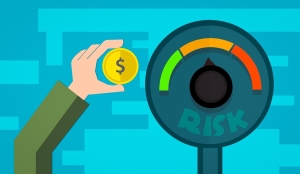Hedging 101 – Part Six: Futures Contracts
In our last Hedging 101 post, we talked about the importance of risk policy discussions. While not a glamorous or exciting part of hedging, risk policies help make sure your business is not taking on unnecessary risks. And protecting your business against risk is what hedging is all about.
Strategies to Protect Against Risk
Once you have identified your company’s risk policy, then you are ready to start identifying different strategies to protect against many of the risks we identified earlier.
Some of those strategies involve these potential tools:
Using a Financial Hub Product
Today we want to dig deeper into the second strategy and describe two specific ways to utilize a Financial Hub Product.
Financial Hub Products = Futures Contracts
Many energy commodities have financial hub products, called futures contracts, that actively trade on financial exchanges. CME Group, which owns and operates some of the largest commodity exchanges, describes a futures contract this way:
- A legally binding agreement to buy or sell a standardized asset on a specific date or during a specific month.
- A transaction facilitated through an exchange.
Whether it is a futures contract for crude oil, natural gas, gold, cocoa or wheat, all of these agreements have several things in common. They all have a standardized contract. They all have contracts for specific future months. And all of them can be purchased or sold at any given time prior to their contract expiration.
That last similarity – buying or selling the contract at any given time – is like the ability to buy or sell a stock. This provides some flexible hedging opportunities for propane companies.
Example of a Futures Contract in Action
Example: Utilizing a Financial Hub Product
We’ll demonstrate that flexibility by expanding an example from a prior post:
1. TFD (Twin Feathers Distribution company), our hypothetical propane firm, sells 1,000 gallons of a future propane delivery to roughly 42 customers at a price of $2.00 per gallon (total of 42,000 gallons).
2. TFD desires a margin of $1.00 per gallon on this sale.
3. The current propane supply market in the TFD region would allow for the purchase of propane at either the St. Clair or Marysville terminal at the daily Mont Belvieu average price plus $.10/gallon. The $.10/gallon would be called the basis for that region.
4. Daily Mont Belvieu is considered a hub product. This hub product price comes from the average of the high/low average in the financial markets that is reported by the OPIS service. For this example, that daily price will be $.83/gallon.
Here is how the math will work.
| Sale to Customer: | $2.00 per gallon |
| Cost: | |
| Daily Mont Belvieu Avg: | ($.83) per gallon |
| Regional Basis Price: | ($.10) per gallon |
| Transportation to TFD Facility: | ($.05) per gallon |
| Total Cost: | ($.98) per gallon |
| Margn to TFD: | $1.02 per gallon |
In that prior example, we demonstrated how TFD could expand their margin by using a hub product plus the basis instead of utilizing a prebuy.
The Risk – Selling Back the Financial Hub Product
If TFD makes the decision to purchase the financial hub product, either on an exchange or directly from a trading company, they have another particular risk – selling back the financial hub product. Let’s expand this example a bit more.
Example: Selling Back the Financial Hub Product
Deciding to Sell in the Future
TFD knows they will deliver to those customers in January of the winter season. The current January price in the summer, when they are making this margin decision, is the $.83/gallon shown above. TFD purchases the financial hub product and then will have to decide to sell it sometime in the future. Below are future prices for the January contract as of specific dates:
- January 5 = $.88/gallon
- January 10 = $.92/gallon
- January 15 = $.94/gallon
- January 20 = $.89/gallon
- January 25 = $.87/gallon
- January 30 = $.84/gallon
- Monthly Average = $.89/gallon
Financial Impact of a Decision to Sell
TFD does not know the future prices and must decide as the month moves forward regarding when to sell the hub product. In addition, TFD knows that they will be making roughly equal deliveries to all 42 customers throughout the month. IF they choose to sell on January 15th, here is the impact.
| TFD sells 42,000 gallons on January 15: | $.11/gallon gain |
| Cost of propane based on average liftings: | ($.06)/gallon loss |
| Total Additional Gain/Loss: | $.05/gallon |
Results of Using Hedging Tools
Our original example had TFD purchasing propane at $.83/gallon, but TFD ended up lifting product evenly over the month to achieve the of $.89/gallon. That is why we must recognize a loss on that part of the formula. However, the sale of the hub product both covered that loss and provided additional margin gain of a nickel.
Using futures contracts or financial hub products provides additional opportunities and risks for those looking to protect their margin. In our next post we will review another method to further reduce some of the risks of selling back a financial hub product.
Hedging 101 – Part Six: Futures Contracts
By JD Buss







